When you peek into your tank and see that your favorite snail is not moving, your first instinct may be to think the worst.
You may be relieved to learn that aquarium snails have this tricky habit of scaring aquarium keepers! All joking aside, the fact that your snail is not moving may not mean that you have a dead snail.
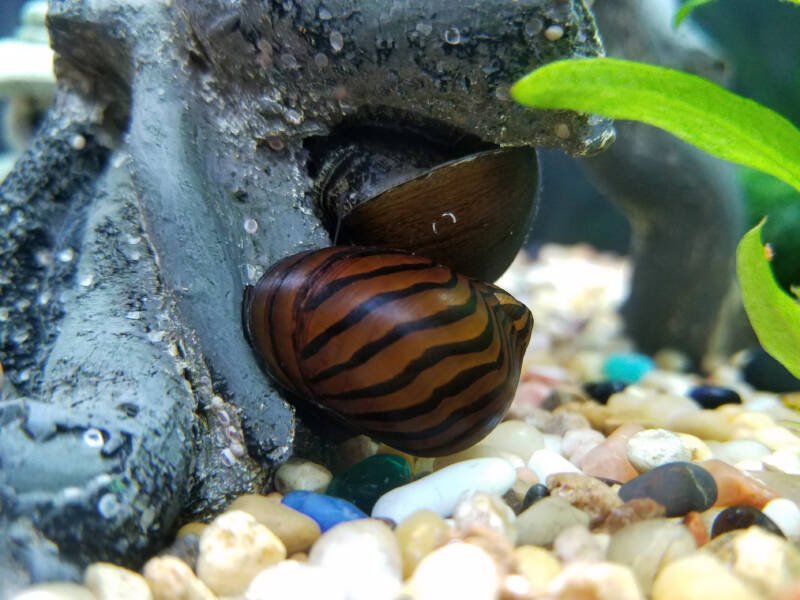
In fact, many aquarium snails remain inactive for extended periods to rest. A floating snail may not be cause for alarm, either, as some species float on purpose.
Keep reading for tips to tell if your snail is dead or sleeping.
In this article
Why is My Snail Not Moving?
If you notice that your snail has not moved for an extended period, there may be several reasons why that are perfectly normal. Some reasons require intervention on your part, while others will resolve on their own.
1. They May be Sleeping
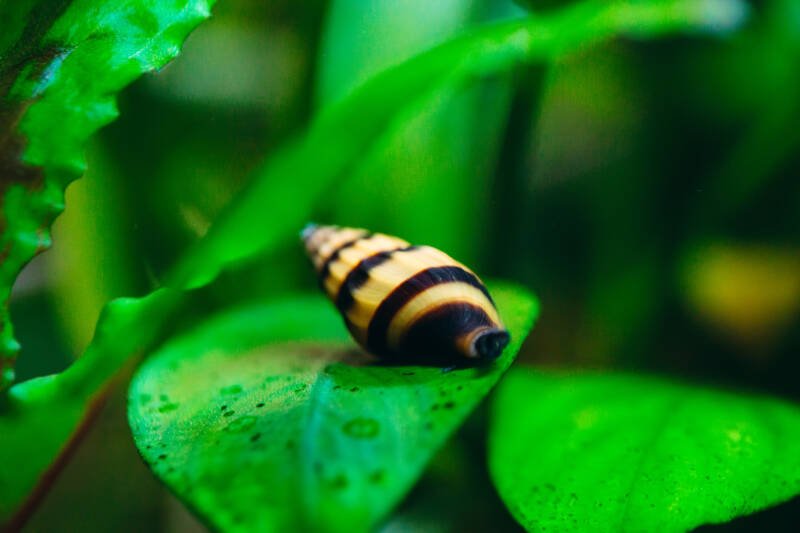
If you have a highly active snail that suddenly stops moving, this could be a sign of resting.
For some species, this resting period is short, but for others, it can last for days at a time, which can give you a scare the first time you see it.
A good example is the assassin snail. It is not unusual for assassin snails to rest for two or even three days, especially if they have just had a large meal. After this time, check to see if they have moved.
2. They May Be Stressed
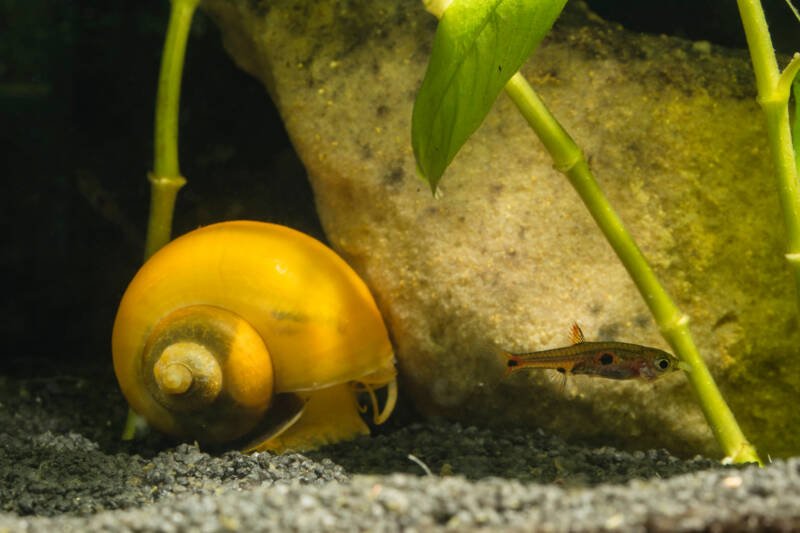
Another reason your snail may not move is that they are stressed. This stress can come from living with tank mates that constantly harass them.
Some snails can escape by sealing themselves up in their shells using their operculum or trap door. Other species, such as pond snails, do not have such a protective feature and may not be moving due to constant stress.
Always ensure that any tank mates you place with your snails are peaceful so that your snails can go about their business.
3. They May Be Hibernating
In the wild, snails hibernate during colder months, and this is perfectly normal. In an aquarium, it is a sign that something in the environment is wrong.
Mystery snails can go into a temporary hibernation state if the water temperature stays too low or if they are not getting sufficient food.
They can remain motionless and still be alive for weeks at a time. Be sure to correct the water temperature and/or supplement your snail’s diet to bring them out of hibernation.
4. The Water Parameters May Be Off
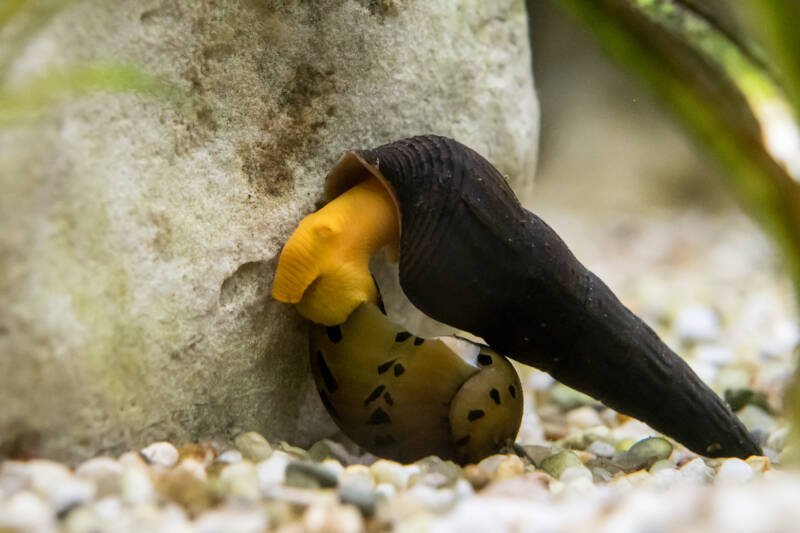
Check your aquarium water. Snails, like any other aquarium species, are negatively affected by shifts in water quality.
Conditions outside of your snail’s tolerance range can impact their behavior.
An ammonia spike can result in your normally active nerite snails slowing down or stopping entirely. Your apple snails may be floating, or your assassin snails may remain inside their shells for an extended period.
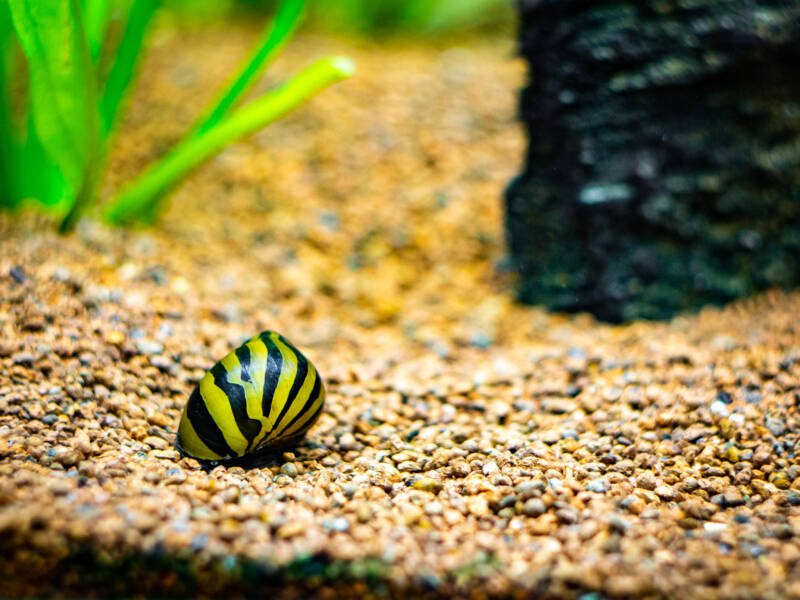
Isolate Your Snail
You can try removing the snail from the community tank into a hospital tank.
Make sure the water parameters for the isolation tank are set for your snail, as moving them to an immature tank can only further shock them. Observe them for a few days to see if they begin to move.
Test and Correct Water Conditions
Use a reliable test kit to make sure all parameters, including temperature, pH level, and hardness, are within the range tolerated by your snail species.
Likewise, test the nitrite, nitrate, and ammonia levels to ensure they are not elevated.
Keeping the water at a poor quality can eventually result in the death of your snail, so correct the conditions as quickly as possible.
Consider adding live aquarium plants to help regulate the cycle of nutrients in your aquarium.
5. They May Not Be Getting Enough Calcium
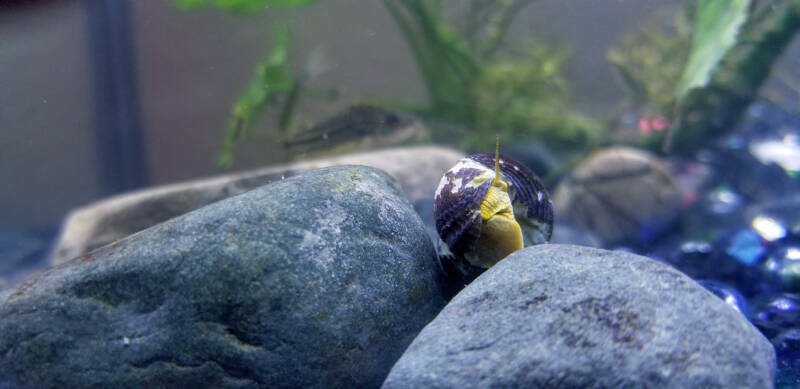
If they do not receive sufficient calcium, your snail’s shell can begin to deteriorate.
Snails get calcium both from the water and their food. Giving your snail foods such as kale and zucchini will provide the nutrients they need.
For the water, you can determine calcium levels with a test kit. The recommended level of calcium in the water varies depending on the source, so check with your breeder to learn the best level for your snail.
If you find the levels to be low, you can adjust them using liquid supplements or mineralizing the water using eggshells or cuttlebone.
6. They May Be Getting Too Much Light
Most snails prefer to be active at night, so make sure you are cycling between light and dark periods in your aquarium.
A lighting system with a timer can help if you tend to forget to hit the switch.
Note where your snail was the evening before and where they are in the morning to reassure you that your snail is just fine.
Why is My Snail Floating?
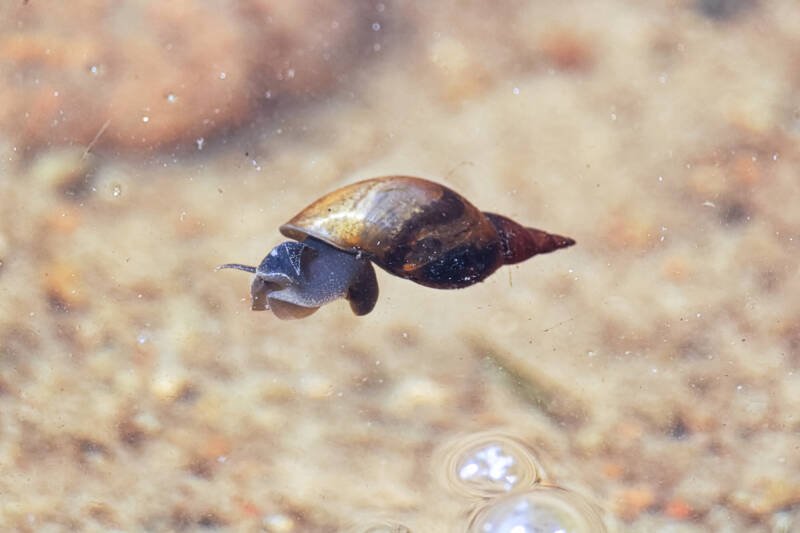
A floating snail on the water surface is not necessarily an indication that they are dead. Floating is one technique that snails use in the wild to move quickly from place to place.
By trapping a small bubble of air in their shells, the snails can rise to the surface and float along with the current. Apple snails are prone to doing this in captivity.
Other snail species float to get air. This activity will not typically last long but may be an indication that your water quality is poor.
They May Be Hungry
Conversely, if your snail is floating, it may be hungry. Snails will trap air in their shells to float to the surface and snack on any biofilm existing there.
Consider supplementing your snail’s diet with fresh food attached to the tank bottom.
How Can You Tell if Your Snail is Dead?

A quick assessment of their situation and a peek into the shell will let you know if your snail looks healthy or not.
Not Sticking to Things
First, note whether your snail is sticking to a surface in the tank. A dead snail cannot maintain a hold on any surface.
If they are sticking, they are probably resting. If they are not sticking, there may be something wrong, and further investigation is needed.
Body is Out of the Shell
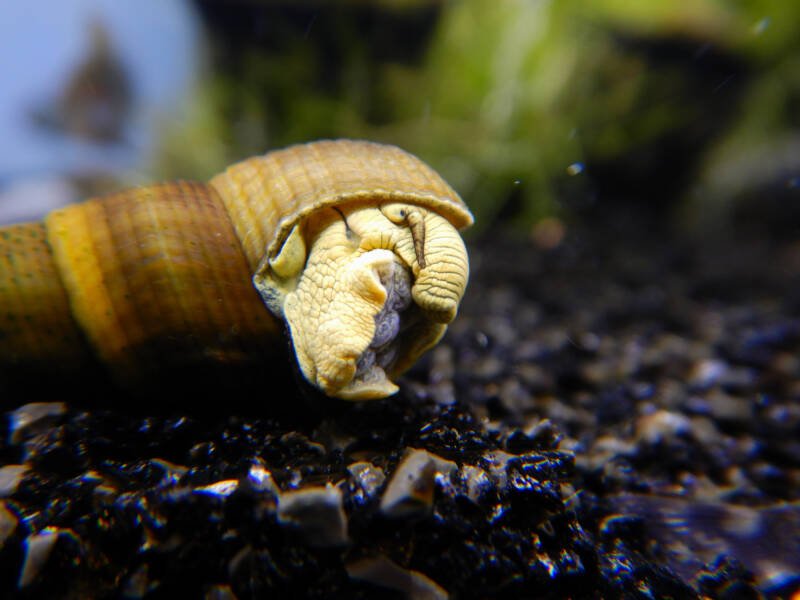
Pick up the snail shell and examine the inside. If your snail has died, its body will begin to shrink and decompose.
Initially, you may see the snail’s body hanging loosely out of the shell. As the body continues to decompose, it may be gone from the shell completely.
Smell
A dead snail will produce a foul, easily distinguishable odor. It sounds gross, but one way to determine if your snail has died is to pick up the shell and give it a sniff.
Always use gloves when handling a potentially dead snail, as the smell is difficult to remove from your hands.
What Should You Do with a Dead Snail?
If you find that your snail is dead, take action immediately to minimize the impact on your tank conditions.
Remove the Snail
The most important thing to do with a dead snail is to remove it from the water as soon as possible.
Leaving a decaying snail in the tank will negatively impact your water quality and can harm other inhabitants.
Clean the Tank
Clean your tank well and perform a partial water change to mitigate the impacts of the decaying snail.
Closing Thoughts
Whether you find your snail dead or alive and simply not moving, the first question you should ask is, “Why did this happen?” It is important for the overall health of your tank that you find out the reason.
The faster you correct any issues that may have caused your snail to pass away or caused them to remain inactive for an extended period, the faster you can lessen its potential impact.
Have we missed anything? Let us know in the comments below!